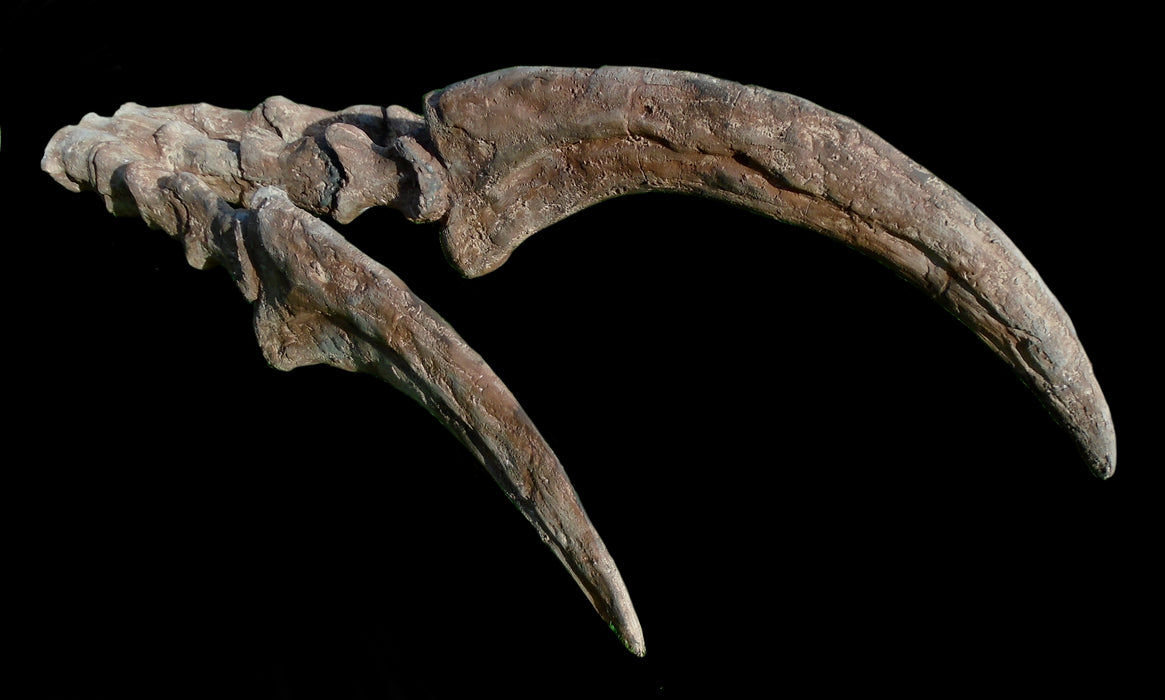In a groundbreaking discovery, paleontologists have unearthed mysterious ancient teeth in three English counties, believed to belong to dinosaurs that roamed Britain 168 million years ago. The fossils, found in Oxfordshire, Gloucestershire, and Dorset, are the first-ever examples of therizinosaur and troodontid dinosaurs discovered on UK soil.

Furthermore, these remains are the oldest-known evidence of these species worldwide and could potentially represent some of the earliest relatives of birds ever discovered.

Therizinosaurus, a large herbivore dinosaur from the late Cretaceous period, was known for its distinctive long scissor-like claw bones. The dinosaur featured in the most recent Jurassic World film and, along with the troodontid and the well-known Velociraptor, belonged to a group of ancient creatures called the maniraptorans.

Recently reported by the journal Papers in Paleontology and by the Daily Mail, these dinosaurs, which evolved into numerous species during the Middle Jurassic period, are considered some of the closest relatives to modern birds. However, due to the scarcity of fossils from this time, knowledge of their origins remains limited.

Researchers from the Natural History Museum and Birkbeck College identified these mysterious teeth – some discovered as far back as the 1970s and others more recently – using pioneering machine learning techniques.
“Previous research had suggested that the maniraptorans were around in the Middle Jurassic, but the actual fossil evidence was patchy and disputed,” said lead researcher Simon Wills, a PhD student at the Natural History Museum.

“Along with fossils found elsewhere, this research suggests the group had already achieved a global distribution by this time. The teeth we analyzed include what are currently the only troodontid and therizinosaur fossils ever recorded from the UK and are the oldest evidence of these dinosaurs anywhere in the world.”
Although earlier studies attempted to classify isolated teeth using various statistical methods, their success rate was not particularly high. This led the experts behind the new research to work on improving machine learning tools like the one they used in their study.

“The use of machine learning in vertebrate paleontology is still in its infancy, although its usage is growing,” Wills said. “The main drawback is the need to have a comprehensive training dataset for the models to learn from. In our study, we are fortunate that there is already a relatively large dataset of dinosaur tooth measurements available that we could use to train the models.”

To employ the machine learning technique, researchers first produced a 3D model of each tooth using CT scanning, enabling the AI to interpret the fossil information. This step was necessary because the teeth were so small that taking measurements by hand was impractical. The team used the measurements of thousands of teeth from known dinosaur species to train three different machine learning models, and the results of each model were combined to identify the most likely origin of each tooth.
As technological innovations continue, researchers anticipate that machine learning will become more commonly used to solve additional paleontological mysteries, unlocking more secrets of Earth’s ancient past.
More about Therizinosaurus
Therizinosaurus, an enigmatic dinosaur that lived during the late Cretaceous period around 70 million years ago, was first discovered in Mongolia. The name Therizinosaurus, meaning “scythe lizard,” comes from its distinctive and massive scythe-like claws, which could reach up to 3.3 feet (1 meter) in length. These remarkable claws are among the longest known for any dinosaur.

Therizinosaurus belonged to the Therizinosauridae family, a group of unusual, large-bodied theropod dinosaurs. Although most theropods were carnivorous, Therizinosaurus and other therizinosaurs were herbivores, making them a unique group within the theropod lineage. It is believed that the long claws were used for various purposes, including foraging for plants, stripping leaves from branches, and self-defense against predators.

Therizinosaurus is considered a member of the Maniraptora group, which includes dinosaurs closely related to modern birds. This group also comprises well-known dinosaurs such as Velociraptor and Troodontidae. The peculiar anatomy of Therizinosaurus and its relatives provides important insights into the diversity and adaptability of theropod dinosaurs, as well as the evolution of herbivory within the group.

The first known bird, Archaeopteryx, lived around 150 million years ago during the late Jurassic period. Archaeopteryx shared many features with its theropod relatives, such as teeth, a long bony tail, and a body structure resembling that of small predatory dinosaurs. However, it also had feathers and wings, indicating its ability to glide or fly.